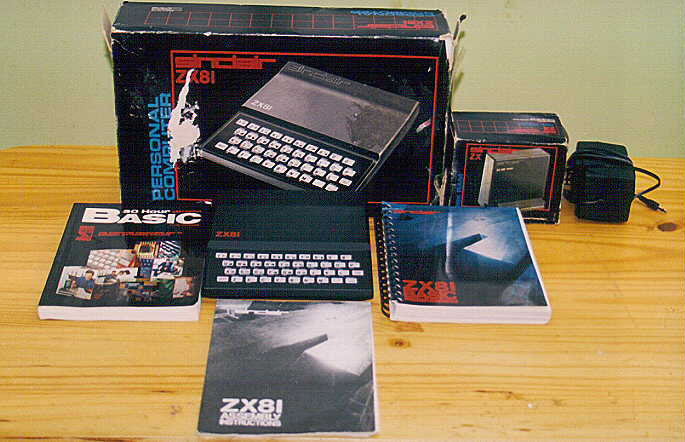 Sinclair Zx Eighty One
Sinclair Zx Eighty One Sinclair Zx Eighty One
Sinclair Zx Eighty OneThe ZX81 was a MicroComputer from SinclairResearch?, released in 1981. It used the Zilog Z80, had 1K of RandomAccessMemory? and a membrane keyboard. Successor to the SinclairZxEighty.

The best PersonalComputer of its time. -- AndrewMcMeikan
I had one, too; it was my first experience writing Basic code. -- JohnWebber
I cut my teeth on mine. I had used a Radio Shack CoCo? before and used Apple II's at school, but this was the first machine I could call my own. The things I loved - the weight and the ease of use - I connected this up to the ancient Black & White TV in my bedroom and then disappeared for months. The things I hated - the screwy way you had to enter BASIC keywords using odd key combinations (you couldn't type them), the way the 16K adapter would come loose all the time, and the fact that the cassette interface always seemed to take 9 or 10 tries to save or load a program. Mine finally gave up the ghost when the mylar ribbon connector from the keyboard to the system board broke (a common occurrence, I believe). BTW, in the U.S. it was marketed by Timex and called the "Timex Sinclair 1000". -- KyleBrown
My first experience of a hacky fix for a hardware problem was discovering that some of the problems with the 16k RAM pack were due to the way the two PCBs inside wobbled and rubbed against each other, and that a sheet of paper between them seemed to reduce the problem. Luckily the chips ran cool. -- RobHarper
Featured (well, mentioned) in WilliamGibson's new novel, PatternRecognition. -- Mike Smith
Notable for it's extremely low price point - GBP 79.99 built on launch in 1981. It was about 20cm x 20cm x 5cm, using a TV for output and a cassette player for storage, and contained 4 or 5 chips. Nearest competitor at that time probably cost over 3 times as much. (TrashEighty? CommodoreVicTwenty, I'd guess - 299 USD.)
Sinclair Research really raised cutting corners to an art form. -- AndrewMcGuinness
When people say the old Sinclairs used a cassette player for storage, they don't mean there was a special add-on cassette drive. They mean it had a headphone port and a microphone port, and you connected those into your stereo. --NickBensema
I remember reading a review in Byte of a variant of the Sinclair. Some of the original designers burnt new ROMs, made a new keyboard overlay, and produced a FORTH box. -- EricJablow
You are thinking of the JupiterAce. Forth, like BASIC, is great for getting a lot of functionality into a small space.
 EditText of this page
(last edited May 17, 2006)
or FindPage with title or text search
EditText of this page
(last edited May 17, 2006)
or FindPage with title or text search